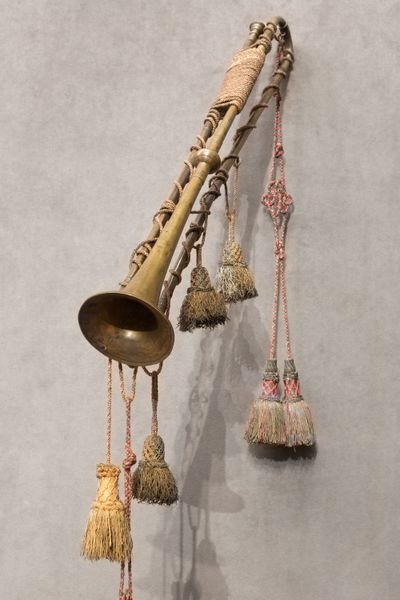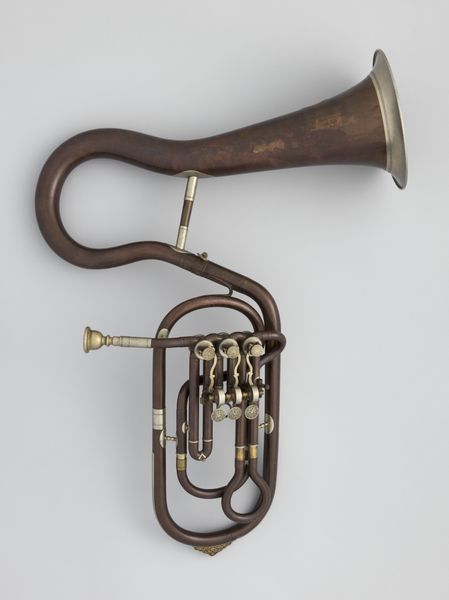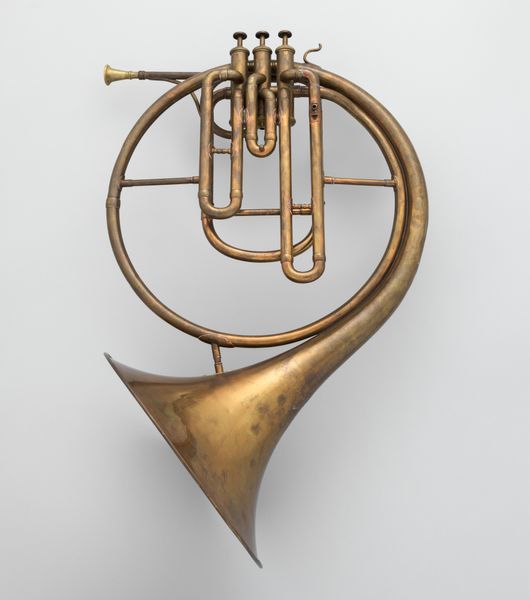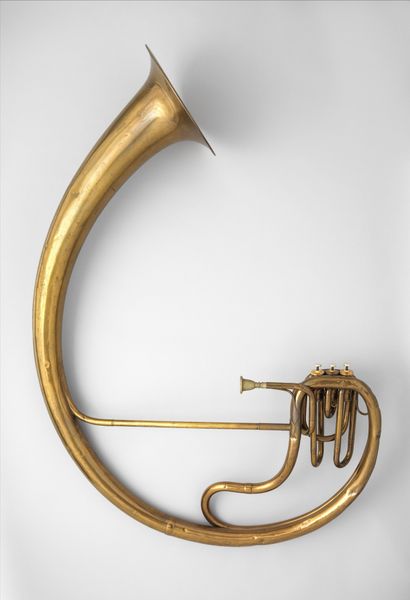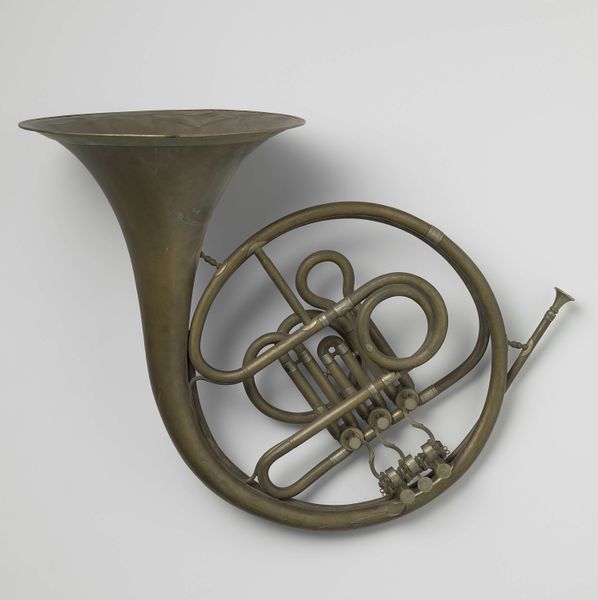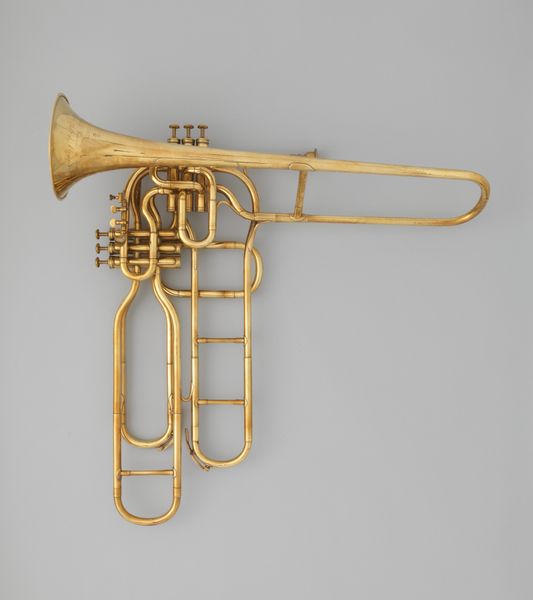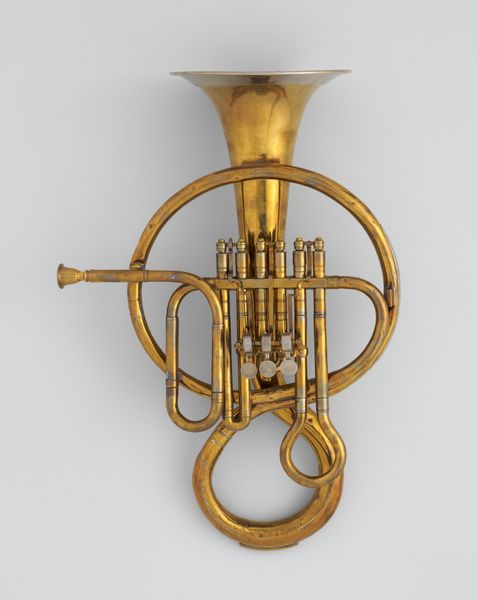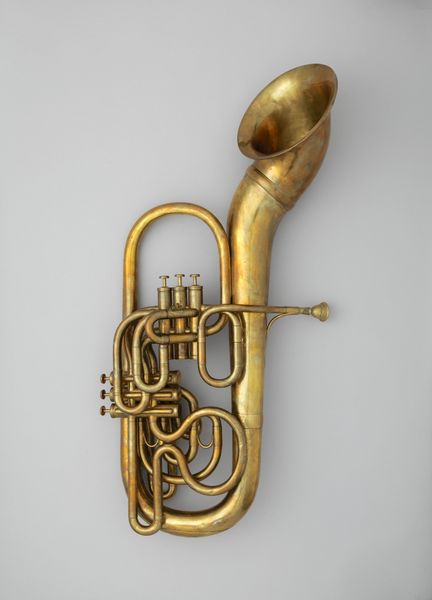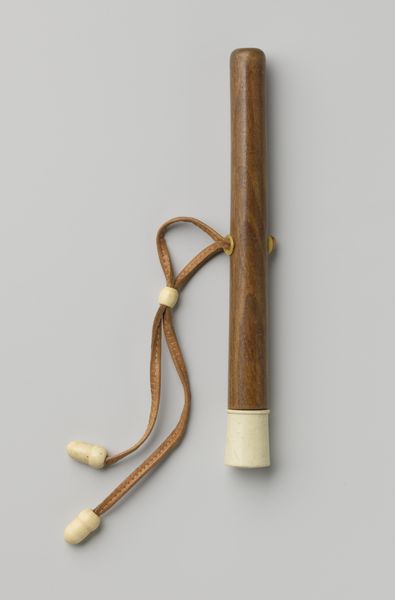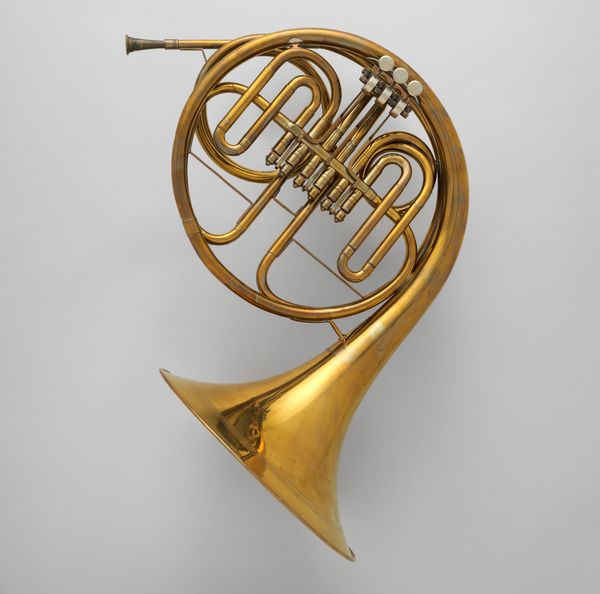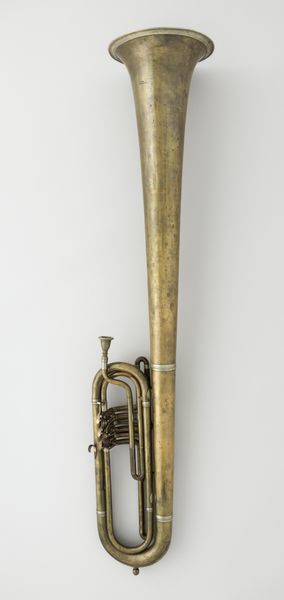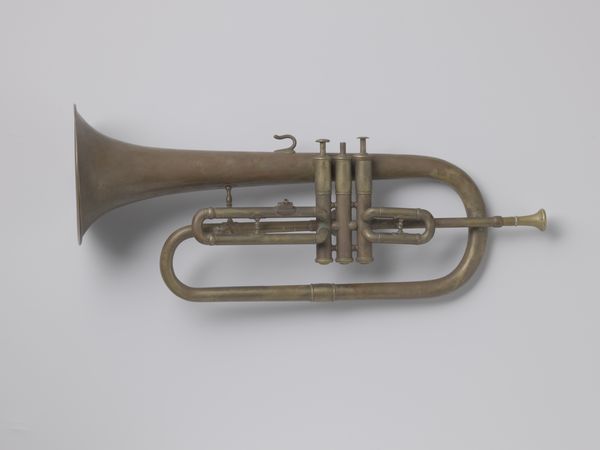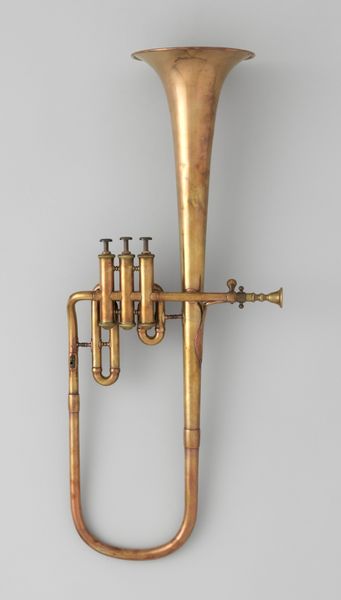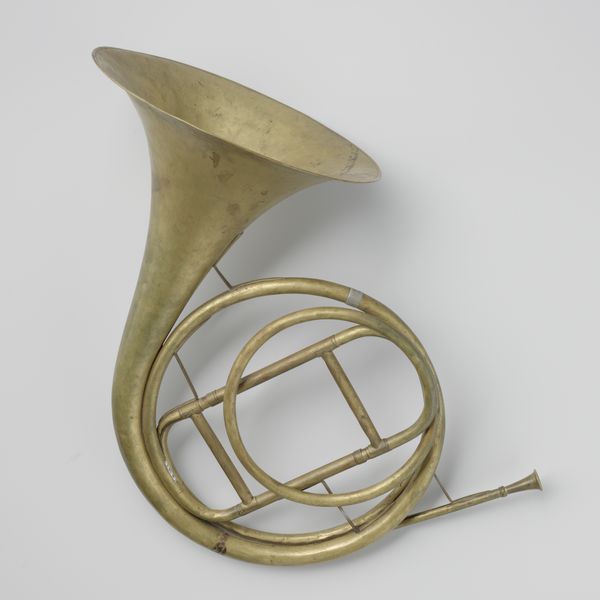
brass, metal, sculpture
#
clear graphic shape
#
3d sculpting
#
3d model
#
brass
#
3d printed part
#
rounded shape
#
metal
#
virtual 3d design
#
sculptural image
#
unrealistic statue
#
3d shape
#
sculpture
#
metallic object render
Dimensions: length 30.5 cm, width 13 cm
Copyright: Rijks Museum: Open Domain
Editor: Here we have a brass bugle made around 1820 by Ludwig Embach & Co. It strikes me as so ornamental for a utilitarian object. How should we interpret its symbolic significance? Curator: It's interesting that you use the word "ornamental," because this bugle embodies how an object created for practical purposes becomes laden with cultural meaning. A bugle calls to arms, yes, but it also signifies a nation's pride, the romanticism of military service, and even mourning during memorial ceremonies. Editor: I hadn't thought of it in relation to mourning. Does the specific shape of the bugle have symbolic weight too? Curator: Absolutely! Consider the circular form: the continuous loop suggests eternity, memory, and the cyclical nature of history. The bright brass material speaks to valor and importance, meant to catch the light, drawing attention. Now, consider the tassels: what do those signify to you? Editor: Luxury, maybe? Something decorative, almost like an award... Curator: Precisely. They visually amplify the object’s symbolic communication, beyond mere function. It transitions from a simple signaling device to an artifact imbued with social and historical narratives. Think of how visual and auditory experiences combine to evoke collective identity! Editor: That makes so much sense! It’s like the visual elements bolster the auditory associations it evokes in memory. Curator: Precisely! And each viewer then adds to it. That’s what makes studying objects so interesting; they never exist in a vacuum. Editor: I’ll definitely think differently about functional objects in museums going forward. Thanks!
Comments
No comments
Be the first to comment and join the conversation on the ultimate creative platform.
